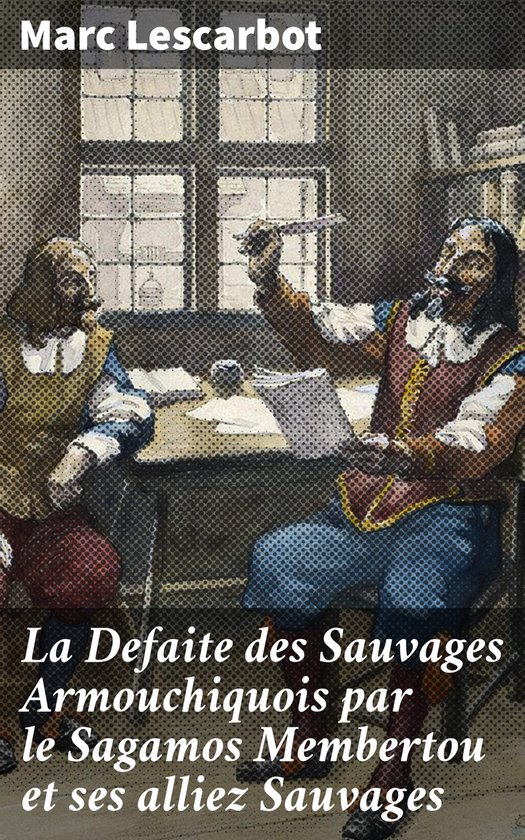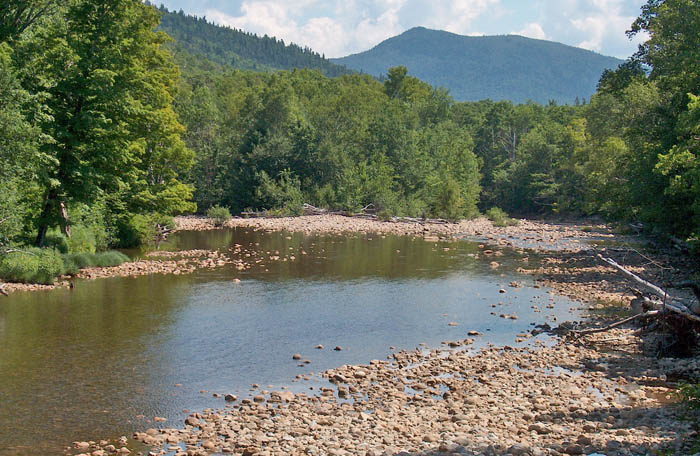
The Ghost in the Archives: Unraveling the Mystery of the Armouchiquois Tribe
Few names in the annals of early North American history evoke as much intrigue and scholarly debate as the Armouchiquois. Not merely a forgotten people, the Armouchiquois stand as a spectral presence in the colonial record – a name frequently mentioned by early European explorers, yet whose true identity, territorial extent, and ultimate fate remain shrouded in a fog of ethnographic confusion and historical ambiguity. Were they a distinct, powerful nation, or a collective label applied by Europeans to diverse indigenous groups in the vast region now encompassing parts of New England and Atlantic Canada? Their story, or lack thereof, is a potent reminder of the complexities inherent in reconstructing the past from fragmented, often biased, colonial accounts, and highlights the profound impact of European contact on Indigenous societies.
The earliest and most influential mentions of the Armouchiquois come from the celebrated French explorer Samuel de Champlain. In his detailed accounts of voyages along the coast of what is now Maine and Massachusetts in the early 17th century, Champlain describes encounters with various Indigenous peoples. South of the Kennebec River, he speaks of the "Armouchiquois," whom he characterizes as a populous, agricultural people living in large villages, cultivating corn, beans, and squash. He noted their distinct language and customs, differentiating them from the more northerly Etchemin and Souriquois (Mi’kmaq).
Champlain’s description painted a vivid, if brief, picture: "They cultivate the land, sow Indian corn, and other grain, which they grind into meal, and make bread of it. They have many fine gardens, and hunt for deer, moose, bear, and other wild beasts, and fish for all kinds of fish." This suggests a sedentary, well-established society with a sophisticated understanding of their environment and agricultural practices. He also observed their well-fortified villages, often encircled by palisades, indicating a need for defense, likely against inter-tribal conflicts or the growing threat of European encroachment.

However, even Champlain’s seemingly clear accounts contain seeds of the future mystery. The very name "Armouchiquois" itself is a point of contention. Some scholars suggest it is derived from an Algonquin term, possibly meaning "dog-runners" or "dog-people," perhaps referencing their use of dogs for hunting or hauling, or, as some argue, a derogatory term used by rival tribes or misunderstood by Europeans. This linguistic ambiguity underscores the challenges faced by Europeans in accurately recording and understanding Indigenous names and identities, often relying on interpreters whose grasp of various dialects might have been imperfect, or applying names heard from one group to a broader, unrelated population.
The core of the Armouchiquois enigma lies in their apparent disappearance from the historical stage. While other groups mentioned by Champlain, such as the Mi’kmaq, Maliseet, Penobscot, and Abenaki, persist and are recognized as distinct Indigenous nations today, the Armouchiquois, as a singular, identifiable entity, faded from European records relatively quickly. This vanishing act has led historians and anthropologists down several interpretative paths.
One prevailing theory suggests that the Armouchiquois were not a single, cohesive "tribe" in the European sense, but rather a collective term used by Europeans to describe a confederation or a cluster of related, but distinct, Algonquian-speaking peoples inhabiting the coastal regions of southern Maine and northern Massachusetts. These groups, likely ancestors of what would later be known as the Western Abenaki, Pennacook, and possibly even some Massachusett and Wampanoag bands, shared cultural traits, linguistic similarities, and economic practices, making it easy for Europeans to lump them under a single, overarching name.
Indigenous societies of the Northeast were often characterized by fluid political structures, seasonal movements, and alliances that shifted over time. What Champlain encountered as the "Armouchiquois" might have been a temporary alliance, a regional dialect group, or simply the dominant group in a particular area at the time of his visit. As historian Emerson W. Baker points out in his work on early New England, "European observers often struggled to grasp the fluid nature of Native American political and social organization, frequently imposing their own concepts of fixed territories and monolithic ‘tribes’ onto complex indigenous realities."
The period immediately following Champlain’s visits was catastrophic for the Indigenous peoples of the Northeast. Between 1616 and 1619, a series of devastating epidemics, likely smallpox, leptospirosis, or bubonic plague brought by European traders and fishermen, swept through the region. These "Great Dying" events decimated native populations, with some estimates suggesting a mortality rate of 75-90% in coastal communities. Villages were emptied, social structures shattered, and the remaining survivors were often forced to consolidate with other groups for mutual protection and survival.
It is highly probable that the people Champlain identified as Armouchiquois were among the hardest hit by these plagues. Their sedentary, village-based lifestyle, which Champlain had noted, might have made them particularly vulnerable to the rapid spread of disease. The few survivors would have integrated into neighboring groups, such as the Abenaki, Penobscot, or other bands further inland, effectively dissolving the distinct identity that Champlain had observed. Thus, the Armouchiquois did not necessarily "vanish" but rather were absorbed and reconfigured into the surviving Indigenous nations, their specific name becoming obsolete in the face of immense demographic and social upheaval.
Furthermore, the escalating conflicts of the 17th century – including King Philip’s War (1675-1678) and subsequent Anglo-French and inter-tribal wars – further disrupted Indigenous communities. The pressures of colonial expansion, land encroachment, and forced displacement led to further amalgamations and migrations. The descendants of the Armouchiquois, if they were a distinct group, would have found their identity subsumed within the larger political and cultural entities that emerged from these turbulent times, particularly the powerful Wabanaki Confederacy.
The Wabanaki Confederacy, encompassing the Mi’kmaq, Maliseet, Passamaquoddy, Penobscot, and Abenaki, formed a crucial defensive and diplomatic alliance against colonial aggression. It is within these established nations that the legacy of the Armouchiquois likely continues, albeit without their original name. Contemporary Indigenous scholars and leaders often view names like "Armouchiquois" as colonial artifacts – labels imposed from the outside that failed to capture the true complexity and self-identification of their ancestors.

As Darren Ranco, a Penobscot scholar, might articulate: "The idea of a ‘lost tribe’ like the Armouchiquois often stems from a Eurocentric view of history. Our ancestors didn’t vanish; they adapted, survived, and continued their traditions, often under new names or within larger confederacies that better reflected their political realities. What Europeans saw as a distinct tribe, we might see as one of many interconnected communities, constantly shifting and evolving."
The story of the Armouchiquois, therefore, serves as a poignant cautionary tale about the pitfalls of relying solely on colonial records to understand Indigenous history. European explorers, driven by their own cultural biases and often limited linguistic capabilities, frequently misunderstood the nuanced social and political structures of the peoples they encountered. Their labels, while valuable for understanding European perceptions, often obscure more than they reveal about Indigenous self-identification and lived experience.
In conclusion, the Armouchiquois remain a fascinating "ghost in the archives" – a name that resonates with the echoes of early contact, profound cultural misunderstanding, and immense demographic catastrophe. They were likely a collection of Indigenous communities, possibly ancestral to the Abenaki and other Wabanaki peoples, whose distinct identity, as perceived and named by Europeans, was tragically erased by the ravages of disease, warfare, and the relentless pressures of colonization. Their spectral presence reminds us that history is not a static collection of facts, but a dynamic narrative, constantly being re-evaluated and enriched by new perspectives, particularly those of the Indigenous peoples who have always been, and continue to be, the true inheritors and keepers of these ancient lands. The quest to understand the Armouchiquois is not just about identifying a lost tribe; it is about critically examining the very foundations of colonial history and honoring the enduring resilience and continuity of Indigenous cultures.


